
Little Lord Fauntleroy Suits: Dressing Up

Figure 1.--The lacey blouse was one of the most important elements
of a Fauntlroy suit. The blouse on this collar has ruffles. It
would have buttons that would secure it to the kneepants. Most
Fauntleroy blouses had front buttons. Note the large collar, wrist trim,
and verical ruffles on the front.
|
The classic Little Lord Fauntleroy suit was worn with kneepants.
Whether it was kneepants or kilts, however, dressing up was a
relatively complicated process, especially for a small boy. But
even for the older boys there were steps like tieing his collar bow or
sash bow that could be very hard to do correctly. It certainly
wasn't a matter of just pulling on a "T" shirt and baggy jeans.
Boys wearing Fauntleroy suits tended to be from wealthy or affluent
families. Often mother either had help or the child was entirely
cared for by a nanny or maid who would assist in the complicated process
of putting on his Fauntleroy suit.
Inroduction
A British school broacast provided some information to children on
how children used to dress. Children are always interested in what
life was like for their counterparts in former years, including how
they dressed. The British school program was featured in a schools
broadcast for
younger children about how boys and girls used to dress at the turn of the
20th Century. The presenter implied that there would be a big difference
in how modern boys and girls would view turn of the century fashions.
Modern girls may not mind wearing the pretty Edwardian party frocks
but, addressing the boys in the TV audience, he said:
Now imagine that you had to dress up like this Edwardian
boy in velvet and ruffles and lace, with patent leather buckle shoes
and stockings. How would you feel going to a childrens' party dressed
like that? But, believe it or not, that was how doting mothers dressed
their sons at the turn of the century--whether the boy liked it or not.
And most boys didn't like it!
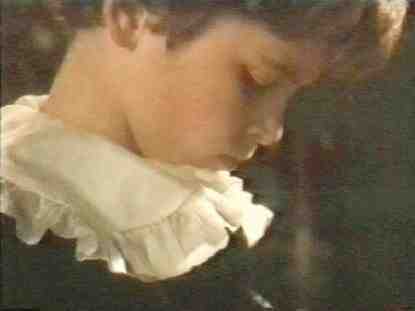
Figure 2.--The boy's nanny was careful to make sure the ruffled
collar fell just right over the velvet jacket.
|
The children were dressed in their nursery. Fauntleroy suits came to be worn by children from a broad spectrum of families. The elegant suits with expensive velvet and lace trim were of course worn by boys from affluent families. Many of these boys grew up in nurseries. I'm not sure at precisely what age they noved on from the nursery, but at least part of the time they wore Fauntleroy suits they would have lived in the nursery. The nursery was the center
of the Victorian and Edwardian child's life. It was there that he or
she slept, took their meals, was schooled, and played. This varied
somewhat on the circumstances of the family and the proclivities of the
parents. The age of the children were of course another factor. Some
children might almost the entire day in the nursery, except
perhaps for a outing to the park or a formal presentation to their
parents. Other children would have more access to the home. Such
practices varied over time and by country. The French, for example, were more likely to give children more access to the home while the English were more likely to restrict them to the nursery.
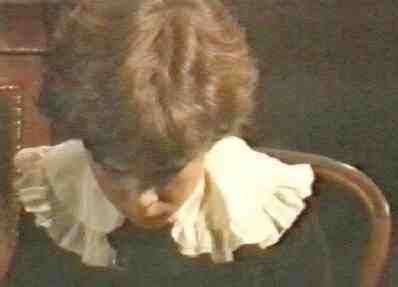
Figure 3.--Short hair with Fauntleroy suits was becoming more
common in the Edwardian era as ringlet curls began to be less stylish. It was not until after World War I (1914-18) that rinflets for boys disappeared entirely.
|
The most complicated process for dressing boys in Fauntleroy suits was
preparing the hair of the boys with long ringlet curls. Many of the boys
at the time probably objected to the long ringlet curls more than the
velvet Little Lord Fauntleroy suit and frilly lave collar. Not all
of the boys wearing Fauntleroy suits had ringlet curls. There was a
major difference of opinion among mothers. Some decided to cut their
son's curls while he was still wearing dresses. Others decided on
breeching their son well before his curls were cut.
While not all boys wearing Fauntleroy suits also had long hair
or ringlet curls, but many did. For these boys, curling the hair was
an involved tedious process. The hair of these
children had to be put in paper curlers each evening before bed--a rather
involved process. In the morning the boy's hair then had to be taken out of the
curling papers and prepared. Some boys even had
hair bows added to their ringlets. This was particularly popular in
France, but not unknown in America as well. Several memoirs refer to this
process with some dislike. It was not only the curls themselves that many boys disliked, but the
tedious process necessary to create and maintain the curls.

Figure 4.--The collar pictured here is an Edwardian ruffled collar
rather than the lace collar more popular for the classic Fauntleroy
suit worn in the Victorian era. The bows commonly worn with lace colars were not so common
with ruffled collars.
them.
|
One important step after putting on his blouse and jacket was to amake sure the collar fell
nicely on the jacket. This was not needed with the lace collars that
were sewn on to the jackets.
The classic Victorian Fauntleroy suit was worn with a lace and
ruffled trimed blouse. The jacket for these suits were often quite
small and worn open so one could see the lovely work on the blouse.
The blouse would not only have a large lace collar, but also matching
lace work at the wrists. Most also had elaborate ruffle trim vertically
around the buttons.
Other boys rather than wearing a lacey blouse and unbuttoen jacket,
wore a closed jacket. Often you could not even see the blouse. They
would have a lace collar sewn on to the jacket at matching lace trim on
the sleeve wrist as well. Usually the collar and wrist trim was smaller
than some of the collars worn with the blouses.
Collar styles changed significantly at the turn of the century which
more or less marked the shift from the Victorian to the Edwardian era.
Classic Fauntleroy suits were made with expensive lace collars. After
the turn of the century, ruffled collars became more common. While
still generally large, they often were smaller than sometimes enormous
collars worn before the turn of the century.
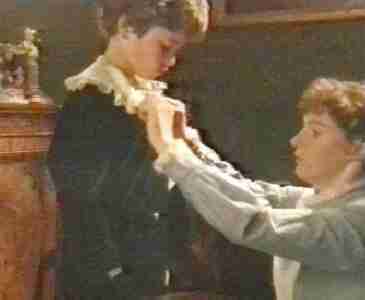
Figure 5.--There was no bow worn with this Edwardian Fauntleroy
suit. The boys that did wear bows, however would require help with
them.
|
One key element of a boy's Fauntleroy suit and lace collar was the
collar bow, which could be quite large and floppy. Not all boys wore bows
with their lace collars, some mothers didn't want anything to detract
from the lace collar. Most mother did, however, want a large bow. The
bows could be various colors or white. Often polka dots or plaid
patterns were employed. The bows were most popular during the Victorian era
before the turn of the century. In the new century, as ruffled collars became more popular,
for some reasons the bow became less commonly employed.
It was very important that the bows be tied
correctly for a good appearance. Nothing could distract fromma boy's
appearance like a slovenly tied bow. It is unlikely that many of the
boys could tie such bows themselves in any form that even approached
a smartly tied bow.
Some of the older boys probably could--but were likely not to
excited about the idea. Thus it was mother or nanny who usually tied
the bows.
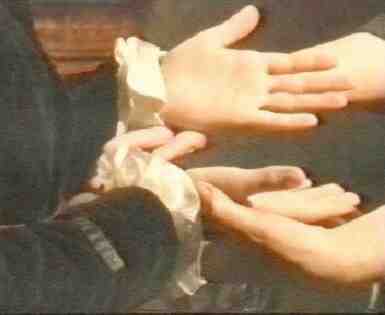
Figure 6.--Most Fauntleroy blouses had wrist trim to match the lace
or ruffled collar. The trim which would extend over the boy's hands
had to be neatly folded back over the sleeve ends.
|
Wrist Trim
Fauntleroy blouses were always long sleeved. Most had sleeve
wrist ruffles as well as a large lace
or rulled collar. The wrist ruffles would match the collar ruffles.
Lace collars of course had lace sleeve wrist decoration. Ruffled collars
had ruffles at the sleeve wrist.
There were two types of sleeve trim:
Long folded: The classic Victorian Fauntleroy blouse
could have a hugh collar and list ruffles up almost to the elbow. The
trim extended well beyond
the hand and had to be golded back over the jacket trim. This
could be a little tricky and most boys needed help getting the
sleeve trim just right. By the
Edwardian period the collars and wrist trim were smaller more modest
affairs. It was important, however, that the wrist ruffles on the
sleeves of the blouse were neatly folded back over the sleeve of the
velvet jacket.
Short floppy: A style which became popular in the Edwardian
period was to wear the ruffles loosely around the hand, rather than
folding them back ob the sleeve. This style harkenedback to the
18th Century.
Stockings
Fauntleroy suits were worn with long over the knee stockings. Boys in
the 1920s began wearing velvet suits with short pants and white kneesocks, but these were not true Fauntleroy suits.

Figure 7.--While not common in the Edwardian era, this boy's Fauntleroy suit has fancey ruffled trim at the hem of his kneepants. This could be pantalettes or trim sewn onto his kneepants to emulate pantalettes.
|
Fauntleroy suits in both the Victorian and Edwardian periods were
worn with long stockings. The most common color was black, but dark hues
of colors matching the colored suits were also worn. In the
Victorian era boys dometimes wore white stockings, but these were
not very popular. The white stockings were more associated with very young boys
and girls of all ages.
Some Fauntleroy suits after the turn of the century were worn with
short socks--usually white. This was, however, not a very commonly
worn style. The long stockings were much more common. This was in part
because that long stockings were seen as more fornal and the Fauntleroy
suit was a formal party suit.
The long stockings worn by both boys and girls were held up by
stocking supporters. There were various types of stocking supporters,
including over the shoulder and waist types. These were always worn,
especially with formal suits because it would have looked terrible if
the child's stockings fell down
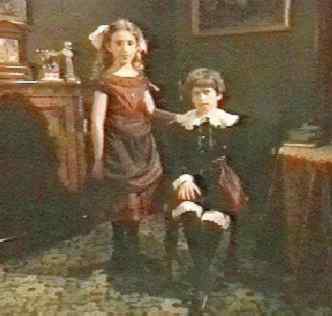
Figure 8.--This image gives a better view of the ruffled trim on
the boys kneepants or perhaps pantalettes that this boy was dressed in. Such trim generally was less common on Edwardian Fauntleroy suits.
|
Pantalettes were very popular for children in the early 19th Century.
There were plain pantalette, but some could be very fancy with lace and
ruffled trim. Some boys wore pantalettes with lacey trim showing at the
hem of their kneepants. This was not a common style and pantalettes were
usually worn by younger boys in the 1890s. They were little worn
after the turn of the century.
I am a little confused by the images on this page. The suit employed
does seem to be
an accurately reproduced Edwardian Fauntleroy suit. I am a little
surprised, however, by the use of the ruffle trim on the boys'
kneepants. This was not a common Edwardian style. I assume the ruffles
are the trim on a pair of pantalettes. But possibly the trim was just
applied to the kneepants--the image is not clear enough to determine this.
I am not sure why they decided to use the style. Perhaps the producers
were trying to make the boy's suit as prissy as possible to make the
point to the boys in the audience of how fancy dress styles were for boys
at the turn of the century.
Another point is that pantalettes were often worn
instead of long stockings. While some boys wore them with long
stockings, this was not a common practice. This may have been
somewhat different by the Ewardian era when pantalettes, especially
for boys were seem much less than in the Victorian era.
Knee Pants or Kilts
Fauntleroy kneepants
Fauntleroy suits were most commonly worn with keepants. By the mid-1880s
when the Fauntleroy craze begin, boys were increasingly wearing kneepants.
They were even becoming common for older boys. Nearly all the boys wearing
Fauntleroy suits would wear them with kneepants. I have necer seen long
pants Fauntleroy suits.
While most boys wore their Faintleroy suits with kneepants, the suits
were also worn with kilts and knickers. Younger boys often wore their
Fauntleroy suits with kilts. Some mothers were so enamored with the Fauntleroy
style that they wanted their sons to wear one before breeching. The answer
was simply wearing the blouse and jacket with a kilt. This was particularly
convenient as the boy could even conntinuing wearing his suit after brreching.
The kilt was simply replaced with kneepants.

Figure 9.--After being dressed, a boy would be given a final going
over to make sure everything about his Fauntleroy suit was just right.
|
There were ecen Fauntleroy-styled dresses worn by boys. These were differen
from the Fauntleroy kilts in that they were one-piece dresses, but had
the lace collar trim.
Fauntleroy knickers
Some boys wore their Fauntleroy suit with knickers rather than keepants.
They were generally the bloucely style of knickers. This sstyle was most
common after the turn of the 20th Century.
Knee Pants Bows
Knee pants normally came with three buttons to emulate the button
closures of 18th Century knee breeches. For the most part they were
ornamental. Some fancy Fauntleroy suits had little bows added at the hem
of the kneepants, tied near or at the three buttons. These bows while
small would be particularly difficult to tie given the location. They
would have to be tied for the boy.

Figure 10.--The waist sash could be a little tricky to get just right. The nanny here is adjusting the boy's sash.
|
Fancy Fauntleroy suits were often worn with silk or satin sashes. This was not always the case. While a boy might normally not wear his Fauntleroy suit with a sash, he would often have it added for special occasions. This probably was at the mother's disgression. I'm not
sure just what determined whether or not a sash was worn. HBC notes that in the photographic record, sashes were often not worn.
Sash colors varied.
Often it was used to add a contrast or a splash of color to the boy's suit.
White and red sashes might thus be worn with a black velvet suit.
Colored suits in dark blue, brown
forrest green, or burgandy might be worn with different shades of those
colors. Boys were cerrtainly helped to put on their sashes. Not
only wrapping it, but certainly tieing it. The bows associated
with Fauntleroy suits look particularly difficult to tie. The
boes were large with substantial swatches of material. Some of
the sashes had very fancy tassles.

Figure 11.--Wealthy boys with servants were often helped with every
step of putting on his Fauntleroy suit, even the simple steps like putting on the jacket.
|
Jacket
The Fauntleroy jackets always matched the kneepants. The Fauntleroy
kilt often did not, but the kneepants and knicker always did. The
jacket and kneepants were normally made of velvet with silk or satin
lining. Other materials could be used, especially during the summer,
but velvet was the most popular material. The suits could be in many colors.
Black seem to have been the most common color, but dark cilors, including
royal blue, forrest green, brown, and burgandy were also worn.
Wealthy boys who had help dressing might even be helped to put on
their velvet Fauntleroy jackets. The classic jackets were small and
designed to be worn open so as not to cover up the fancy blouse decorated
with ruffles and lacde. Later jackets were worb buttoned up with less
fancey blouses.
Little Lord Fauntekeroy suits were worn with a variety of hats and
caps. Hats were much more commonly worn in the 19th Century than today.
Adults and the children would generally wear hats before going out in
public. This was especially true when dressing up in a formal garnment
like a Fauntleroy suit.
Sailor hats: The headgear most commonly associated with Little
Lord Fauntleroy suits are large brimmed sailor hats. The hats might have
an elastic chin strap to hold it on in the wind as wella s along black
streamer.
Tams: Some boys wore less formal headgear than a wide-brimmed sailor hat. One popular choice was a beret-like Tam O'Shanter.
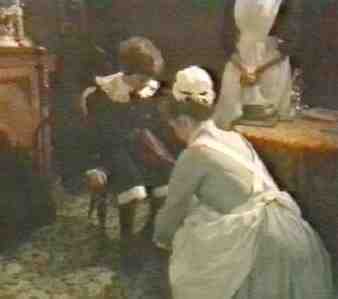
Figure 12.--The last step in the dressing process was to help the boy on with his shoes.
Younger boys in the Victorian era would have difficulty with the
button shoes that were popular. Notice the pantalettes or white
ruffle trim on the kneepants.
|
Boys in the early and mid 19th Century might commonly wear pinafores at home, just like their sisters. This had become less common for boys
by the late 19th Century when Fauntleroy suits appeared. The pinafore was a garment to protect clothes. Thus it is conceivable that a boy might wear a pinafore at home with a Fauntleroy suit, but probably not commonly. After all a mother wanted her to be seen in his Fauntleroy suit and did
not want it covered up. Perhaps he might be put in a pinafore to protect his suit before company arrived or before leaving for a party. Mother's at the time had virtual total disgression about how children
were dressed. A mother that was very concerned about her son taking care of his clothesd might insist on a pinafore. But this would just be at home. Almost certainly he wouldn't go to
the party wearing a pinafore over his Fauntleroy suit. By the late
19th Century it was primarily boys still in dresses or smocks that were
still wearing pinafores.
Shoes
Victorian boys during the classic Fauntleroy craze of the 1880s
and early 1890s generally wore buttonup shoes looking
rather like boots with their Fauntleroy suits. This gave the Fauntleroy
suit rather a strange look to modern viewers the heavy boot-looking
footware does not seem to go with the elegant velvet suits and
frilly lace collars.
Edwardian boys by the turn of the century wore more modern looking
low-cut shoes. Boys might wear patent
leather buckle or strap shoes with a Fauntleroy suit
during this period. Some European mothers
even used shoes with slightly elevated heels. These shoes were
usually black, but white strap shoes were also worn. The white shoes
were always worn
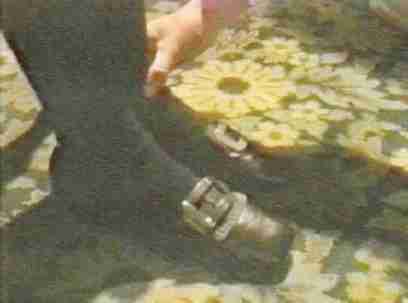
Figure 13.--Both buckle and strap shoes were commonly worn with
Edardian Fauntleroy suits.
|
with white stockings--never dark stickings. The black strap shoes,
however, could be worn with white stockings.
After the boy's nanny, perhaps with the assistance of a maid, had
fininished dressing the boy and his brothers and sisters, would have been
presented to his mother for a final inspection. Presumably nanny was well
versed in preparing the children and they almost always met mothers's
approval. This was of course very important to the busy mother
emershed in the social swirl. Click on "Presentation" above for a view of
the children as they were presented to mother and an assessment of the
presentation process and how the children's clothes were selected.
Christopher Wagner
histclo@lycosmail.com
Navigate related Boys' Historical Clothing Web Site pages:
[Return to theMain Fauntleroy suit page]
[Hair styles]
[Collar bows]
[Dresses]
[Kilt suits]
[Kilts]
[Fauntleroy dresses]
[Sailor suits]
[Sailor dresses]
[Pinafores]
[Smocks]
Navigate the Boys' Historical Clothing Web Site:
[Clothing styles]
[Introduction]
[Chronology]
[Biographies]
[Bibliographies]
[Contributions]
[Activities]
[Countries]
[Boys' Clothing Home]
Created: June 1, 1999
Last updated: August 14, 1999














